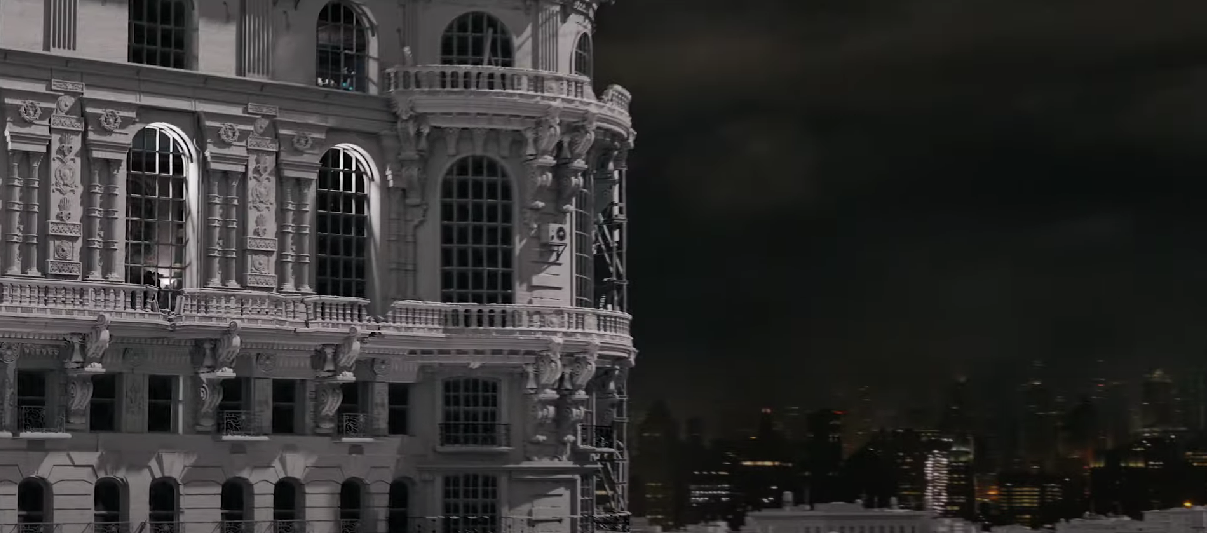0 Comments
0 Shares

Directory
Directory
-
Please log in to like, share and comment!
-
WWW.ENGADGET.COMThe Roku Streaming Stick 4K is back on sale for $29If you've found your TV to be too slow to stream its built-in apps, here's a decent deal that can help fix things on the cheap: The Roku Streaming Stick 4K is once again on sale for $29. This offer has been available for much of the holiday season, and it's not an all-time low the dongle previously fell to $25 toward the end of 2023 but it does match the largest discount we've tracked this year. For reference, Roku normally sells the device for $50, though in recent months it's often retailed for $34 at third-party retailers like Amazon. Either way, you're saving a bit more than usual. The discount is available at several stores, including Amazon, Walmart, Best Buy and Roku.com. If you're hoping to grab the device as a Christmas gift, that'll be more of a hassle: Most listings we could find say that it won't ship until after the holidays, so you'll likely have to order with in-store pickup at Walmart, Best Buy or another retailer with physical locations. We recommend the Streaming Stick 4K in our guide to the best streaming devices. It's not as fast or fluid as a premium set-top box like the Apple TV 4K, but it's still quick to load up apps and menus, and its tiny design plugs directly into your TV's HDMI port. It supports just about all of the major HDR formats and streaming services (Twitch aside), plus it works with Apple's AirPlay 2 protocol, so you can beam content to it from an iPhone. While it can't decode Dolby Atmos audio on its own, it can pass that audio through to a compatible sound system from apps that support the tech. Like other Roku devices, the Streaming Stick 4K is dead-simple to navigate, with a home screen made up from a basic grid of apps. Google's TV Streamer (the top pick in our guide) is much more proactive about recommending content you might like and getting you back to shows you've watched recently, but you might find Roku's interface easier to take in if you don't mind surfing for things to watch yourself. The UI makes a host of free content easily accessible as well, and we found searching to work fine, even if it's not quite as robust as Google's OS. We also like Roku's mobile app, which lets you control the device and listen in privately with a pair of headphones. As with every other streaming player, there are ads scattered throughout the UI, though Roku is at least a little less aggressive about them than Amazon is with its Fire TV devices. A few other Roku devices are still available for their Black Friday prices as well, including the Roku Express 4K+ (which lacks Dolby Vision HDR) for $24 and the Roku Ultra (which has a larger box design, full Atmos support and a more advanced remote) for $79. For most people looking to visit Roku City, though, the Streaming Stick 4K should be the best value. Follow @EngadgetDeals on Twitter and subscribe to the Engadget Deals newsletter for the latest tech deals and buying advice.This article originally appeared on Engadget at https://www.engadget.com/deals/the-roku-streaming-stick-4k-is-back-on-sale-for-29-175310234.html?src=rss0 Comments 0 Shares
-
WWW.ENGADGET.COMFans made a native Star Fox 64 PC port with some modern flourishesA group of talented fans have made a native PC port of Star Fox 64, which they are calling Starship. Even better? Its technically legal. Harbour Masters, the team behind the project, used a tool that converts the original game ROM into PC executable code, so it doesnt actually use any proprietary Nintendo code.This is the same method used to create the native PC port of Legend of Zelda: Ocarina of Time, and that ones still available for download. Members of this crew also ported Majoras Mask and Super Mario 64 using the same conversion tool. There is one major caveat here. Youll need your own legally-sourced Star Fox 64 game ROM to play.Star Fox 64: now on PC, thanks to an unofficial port.https://t.co/YZULlJdrqw pic.twitter.com/q684NpU49p Andy Robinson (@Andy_VGC) December 23, 2024 Just like previous ports, Starship features all kinds of modern bells and whistles to set itself apart from the 1997 original. The frame rate is higher and the port includes frame smoothing technology for better visuals. There are custom-made textures and the ability to run on widescreen monitors, as seen above.Theres also another major benefit. This port is moddable, so who knows what well see in the future once people get their hands on it. The teams Ocarina of Time port has received plenty of love from the modding community. Some mods allow for abilities sourced from newer Zelda games and one even throws functioning Pikmin into the mix because, well, why not?According to Redditors, the Star Fox 64 port is easy to get going on a Steam Deck, if thats your bag. It requires Proton and some light hurdle-jumping, as the code isnt Linux-based. Its been a while since weve gotten a legitimate Star Fox game from Nintendo, and it was a weird one, so this could sate that neverending urge to do barrel rolls.This article originally appeared on Engadget at https://www.engadget.com/gaming/pc/fans-made-a-native-star-fox-64-pc-port-with-some-modern-flourishes-174612229.html?src=rss0 Comments 0 Shares
-
WWW.ENGADGET.COMMeta is reportedly adding displays to its Ray-Ban smart glassesIt looks like Meta is preparing to add displays to its popular line of Ray-Ban smart glasses, according to a report by Financial Times. These screens could show up in a future iteration of the device as early as next year. The likely release window is the second half of 2025.According to folks familiar with Metas plans, the screens will be on the smaller side and will likely be used to display notifications or responses from Metas AI virtual assistant. Its highly unlikely that the company is planning on making this a full mixed-reality device just yet.For that, Meta has the recently-unveiled Orion AR glasses, which are still several years out. The same report indicates that the positive response to the Orion glasses has likely accelerated development and possibly ensured a commercial release. It was uncertain if those glasses would remain an in-house prototype.The Ray-Ban smart glasses have been a surprise hit for Meta, and its easy to see why. They look great and perform admirably. The current model includes in-ear speakers, cameras, microphones and access to Metas virtual assistant.I quite enjoy the simplicity of the current design, particularly when taking photos and videos. My hope is that screens do not get in the way of that simplicity and that they dont come at the expense of, say, improvements to the camera system.Ray-Ban Meta glasses, after all, are the perfect device for snapping quick photos of a pet. Have you ever tried to will an animal to keep still so you can dig your phone out of a bag to take a photo? Those darned cuties never do. The Ray-Bans solve that problem.This article originally appeared on Engadget at https://www.engadget.com/ar-vr/meta-is-reportedly-adding-displays-to-its-ray-ban-smart-glasses-162634427.html?src=rss0 Comments 0 Shares
-
 WWW.TECHRADAR.COMUS Government officials urged to lock down devices amid telecoms breachHigh-ranking US officials have been urged by CISA to enable advanced security features.0 Comments 0 Shares
WWW.TECHRADAR.COMUS Government officials urged to lock down devices amid telecoms breachHigh-ranking US officials have been urged by CISA to enable advanced security features.0 Comments 0 Shares -
 WWW.TECHRADAR.COMUS healthcare giant Ascension says ransomware attack affected nearly six million customersMore than five million people had sensitive data exposed, including healthcare and payment info.0 Comments 0 Shares
WWW.TECHRADAR.COMUS healthcare giant Ascension says ransomware attack affected nearly six million customersMore than five million people had sensitive data exposed, including healthcare and payment info.0 Comments 0 Shares -
 WWW.TECHRADAR.COMWindows 11 suffers more bugs in latest update, with the Start menu hit hard by some frustrating issuesWindows 11s December update introduces visual glitches, problems that are torpedoing the Start menu, and a sprinkling of other bugs.0 Comments 0 Shares
WWW.TECHRADAR.COMWindows 11 suffers more bugs in latest update, with the Start menu hit hard by some frustrating issuesWindows 11s December update introduces visual glitches, problems that are torpedoing the Start menu, and a sprinkling of other bugs.0 Comments 0 Shares -
 WWW.CNBC.COMSilicon Valley's White House influence grows as Trump taps tech execs for key rolesTrump nominated top tech leaders for key spots in his administration, including executives who've held roles at Andreessen Horowitz and PayPal.0 Comments 0 Shares
WWW.CNBC.COMSilicon Valley's White House influence grows as Trump taps tech execs for key rolesTrump nominated top tech leaders for key spots in his administration, including executives who've held roles at Andreessen Horowitz and PayPal.0 Comments 0 Shares -
 VFXEXPRESS.COMThe Penguin: VFX Breakdown by Accenture SongAccenture Song brings alive the intricate artistry that is The Penguin, visually bringing Gotham City to vivid life. This team also crafted the iconic skyline in a digital environment, the gritty essence of Gotham City on full display. Additionally, impressive fire and water FX simulations were delivered by the team, adding a depth to the dramatic scenes of the series.The opening and closing shots of the series are real highlights, demonstrating Accenture Songs ability to combine creativity and technical precision. These sequences not only set the tone but also underline the transformation of Gotham into a living, breathing character within the story.From the smallest details to grand cinematic vistas, the VFX work exemplifies the dedication and talent of the team in shaping The Penguins dark, atmospheric world. Fans can now delve into the breakdown and witness the artistry behind these memorable scenes.The post The Penguin: VFX Breakdown by Accenture Song appeared first on Vfxexpress.0 Comments 0 Shares
VFXEXPRESS.COMThe Penguin: VFX Breakdown by Accenture SongAccenture Song brings alive the intricate artistry that is The Penguin, visually bringing Gotham City to vivid life. This team also crafted the iconic skyline in a digital environment, the gritty essence of Gotham City on full display. Additionally, impressive fire and water FX simulations were delivered by the team, adding a depth to the dramatic scenes of the series.The opening and closing shots of the series are real highlights, demonstrating Accenture Songs ability to combine creativity and technical precision. These sequences not only set the tone but also underline the transformation of Gotham into a living, breathing character within the story.From the smallest details to grand cinematic vistas, the VFX work exemplifies the dedication and talent of the team in shaping The Penguins dark, atmospheric world. Fans can now delve into the breakdown and witness the artistry behind these memorable scenes.The post The Penguin: VFX Breakdown by Accenture Song appeared first on Vfxexpress.0 Comments 0 Shares -
 WWW.FASTCOMPANY.COMRumble stock price soars to fresh highs after Tether invests in the YouTube alternativeTraders look like theyre ready to rumble today.Rumble, the YouTube alternative video-streaming platform that has become popular in right-wing circles, said on Friday that it has secured a $775 million investment from cryptocurrency company Tether. Following the news, Rumble Inc. shares (NASDAQ: RUM) skyrocketed up almost 94% as of 11 a.m. ET on Monday, inching near $14. The stock had previously peaked at $14.37 per share way back in February 2022, but it has fallen since then. Todays gains mark a fresh high point for the stock.Tethers investment will see it purchase more than 103 million shares at $7.50. Rumble said it will use $250 million to support the platforms growth and the rest to fund a self-tender offer for 70 million Class A shares.I could not be more excited about this collaboration with Tether, said Chris Pavlovski, Rumbles chairman and CEO, in a statement. I truly believe Tether is the perfect partner that can put a rocket pack on the back of Rumble as we prepare for our next phase of growth.Additionally, Paolo Ardoino, Tethers CEO, said that the investment represents a meshing of the two companies shared interests. Tethers investment in Rumble reflects our shared values of decentralization, independence, transparency, and the fundamental right to free expression, Ardoino said in statement. In todays world, legacy media has increasingly eroded trust, creating an opportunity for platforms like Rumble to offer a credible, uncensored alternative.Rumble stock has struggled since its debutDespite having been founded more than a decade ago, Rumble has only gained traction over the past few years. Its become a haven for content creators focused on topics such as conspiracy theories about vaccines and the 2020 election, and some of its most-watched channels include those hosted by Dan Bongino, Steve Bannon, and Steven Crowderall conservative-minded creators.Pavlovski has argued that the sites makeup is more politically diverse than is generally reported, and last year he shared data indicating that independents and people with no party affiliation made up its largest share of users.Rumble went public via a SPAC (special purpose acquisition company) merger in 2022, but its stock has failed to gain traction since, trading under $10 a share for most of the past two years. It will be interesting to see if Fridays news changes the stocks fortunes over the long term.0 Comments 0 Shares
WWW.FASTCOMPANY.COMRumble stock price soars to fresh highs after Tether invests in the YouTube alternativeTraders look like theyre ready to rumble today.Rumble, the YouTube alternative video-streaming platform that has become popular in right-wing circles, said on Friday that it has secured a $775 million investment from cryptocurrency company Tether. Following the news, Rumble Inc. shares (NASDAQ: RUM) skyrocketed up almost 94% as of 11 a.m. ET on Monday, inching near $14. The stock had previously peaked at $14.37 per share way back in February 2022, but it has fallen since then. Todays gains mark a fresh high point for the stock.Tethers investment will see it purchase more than 103 million shares at $7.50. Rumble said it will use $250 million to support the platforms growth and the rest to fund a self-tender offer for 70 million Class A shares.I could not be more excited about this collaboration with Tether, said Chris Pavlovski, Rumbles chairman and CEO, in a statement. I truly believe Tether is the perfect partner that can put a rocket pack on the back of Rumble as we prepare for our next phase of growth.Additionally, Paolo Ardoino, Tethers CEO, said that the investment represents a meshing of the two companies shared interests. Tethers investment in Rumble reflects our shared values of decentralization, independence, transparency, and the fundamental right to free expression, Ardoino said in statement. In todays world, legacy media has increasingly eroded trust, creating an opportunity for platforms like Rumble to offer a credible, uncensored alternative.Rumble stock has struggled since its debutDespite having been founded more than a decade ago, Rumble has only gained traction over the past few years. Its become a haven for content creators focused on topics such as conspiracy theories about vaccines and the 2020 election, and some of its most-watched channels include those hosted by Dan Bongino, Steve Bannon, and Steven Crowderall conservative-minded creators.Pavlovski has argued that the sites makeup is more politically diverse than is generally reported, and last year he shared data indicating that independents and people with no party affiliation made up its largest share of users.Rumble went public via a SPAC (special purpose acquisition company) merger in 2022, but its stock has failed to gain traction since, trading under $10 a share for most of the past two years. It will be interesting to see if Fridays news changes the stocks fortunes over the long term.0 Comments 0 Shares







